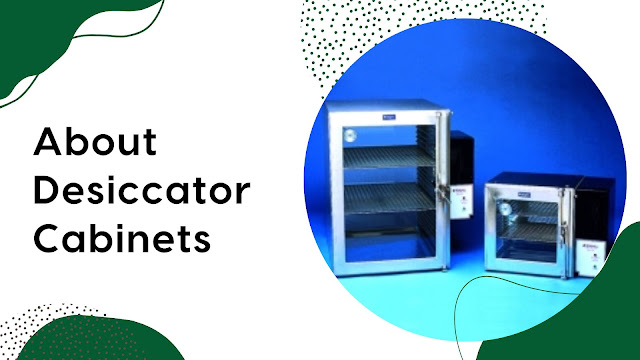Everything You Need to Know About Desiccator Cabinets
Specifically designed to possess a low-humidity aura for moisture-prone fragile items, Desiccator cabinets are also known as nitrogen dry boxes or nitrogen desiccator cabinets. These are often giant units with considerable compartments. These modest yet remarkable cabinets have revolutionized storing sensitive materials, safeguarding their quality and usability. Whether in a laboratory, industrial setting, or even within the confines of a collector's chamber, Desiccator Cabinets play a pivotal role in maintaining the purity and longevity of a wide array of items. In this blog, we delve into the construction, applications, and absolute charm of these ingenious storage solutions.
Construction
The Desiccator cabinets are sealable chambers that retain nitrogen gas. As mentioned, these are used to avert reflexes between moisture-prone materials and atmospheric humidity. These are composed of a plethora of materials, including Clear acrylic, highly polished Stainless steel, Static-dissipative polypropylene, and Durastar co-polyester.
In order to maintain humidity levels, the Desiccator cabinets are developed explicitly in such a way that they remain fully airtight. They have mechanical seals comprised of closed cell EPDM (ethylene propylene diene monomer). Furthermore, these cabinets are also ideal for restraining stains and unbalance. The Desiccator cabinets are widely used for preserving electronics, reagents, optical equipment, and several other humidity-sensitive items.
Applications
Laboratory Wonders
Laboratories stand as the strongholds of innovation and research, and Desiccator Cabinets find their home here. From safeguarding moisture-sensitive chemicals to preserving complex laboratory instruments, these cabinets ensure that the delicate balance mandated for accurate experimentation is always maintained.
Artistic Determination
Desiccator Cabinets have surpassed the realm of science, making their mark in the art conservation arena. For artists working with watercolors, parchments, and delicate sculptures, these cabinets act as time capsules, freezing moments of creativity in their purest forms.
Gastronomy Safeguard
Even the culinary world has embraced the prowess of Desiccator Cabinets. Pastry chefs and food scientists utilize these cabinets to prevent moisture-related texture changes in baked goods, chocolates, and intricate sugar art, allowing their culinary creations to remain visually stunning and delectably delicious.
Varied Applications Across Industries
Laboratory Marvels
Desiccator cabinets are of utmost importance in laboratories for protecting hygroscopic chemicals and sensitive samples from moisture-induced degradation. Their controlled atmosphere ensures that experiment results remain authentic and consistent.
Electronics Safe Haven
The electronics industry embraces desiccator cabinets to shield elements and devices from moisture-related malfunctions. This is particularly crucial in the manufacturing and storing semiconductors, where even the slightest humidity exposure can lead to irreparable damage.
Culinary Artistry Preserved
Beyond the scientific realm, desiccator cabinets find their place in the culinary world. Professional pastry chefs and chocolatiers utilize these cabinets to prevent moisture absorption, maintaining their edible creations' delicate textures and intricate arrangements.
Art Galleries and Museums
Desiccator cabinets play a critical role in art conservation. They safeguard paintings, manuscripts, and artifacts, preventing moisture fluctuations that could compromise these invaluable treasures' structural integrity and aesthetics.
Optics and Lenses
Precision optics, such as lenses and camera equipment, are susceptible to moisture-induced fogging and deterioration. Desiccator cabinets provide a moisture-free abode for these optical wonders, ensuring they deliver consistently sharp and precise performance.
Conclusion
Desiccator cabinets, with their meticulous construction and versatile applications, stand as sentinels against the ravages of humidity. From laboratories to art galleries, electronics to the culinary arts, these cabinets silently preserve the essence of materials that define refinement and creativity. These cabinets can be available in bright hues to enable the visibility of sensitive samples. Whenever selecting a desiccator cabinet, it is highly advisable always to consider its ability to retain a dry condition and avert dampness. You can also consider whether it has a hygienic setting for the needed materials.




Comments
Post a Comment